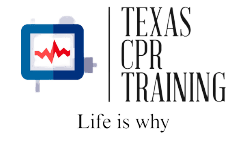
Poisons in the Home
Are you aware of poisons in your home? Here are a list of some:
- Carbon Monoxide Poisoning
This gas is in fact an invisible killer. Make sure there’s a carbon monoxide alarm in every sleeping area of your home.
- Cleaning substances
- Laundry products
- Vitamins
- Pesticides
- Plants
- Prescriptions
- Cosmetics and personal care products
Bathroom
All medicines (both prescription and over-the-counter), aftershave lotion, alcohol/hydrogen peroxide, bath oil, cleansers/disinfectants (including floor, window, toilet bowl, and tub/tile cleaners), deodorizers/sanitizers, drain openers, hair removers, hair colors/permanents, mouthwash, ointments, shampoo/hair products
Bedroom
Cosmetics (including nail polish/remover, perfumes/colognes), all medicines (including cough medicine, prescription drugs, and sleeping aids), mothballs, ointments
Garage/Shed
Antifreeze, cleaning fluids (including hand cleaner, car polish), fertilizer/weed killer, gasoline/kerosene, lighter fluid, lime/lye, mothballs, paint/paint remover, pesticides/insecticides, turpentine
Laundry
Bleaches, cleaning fluids, soaps/detergents, stain removers, spray starch
Other
Alcoholic beverages, cigarettes, nicotine patches, medicines (including prescription or over-the-counter, and pet medicine), poisonous plants (such as poison ivy, oak or sumac and some household plants)
What To Do in Case of a Poisoning
Keep the number for your local poison control center next to your telephone and call immediately. If you don’t have the number handy, dial 911 or your local emergency number.
Stay calm and have the container or label of the poisonous substance with you when you call your poison control center. Give the exact name of the product; the amount taken; tell them when the poisoning occurred; the age, weight and condition of the person who took the poison; and your location and phone number.
What To Do
If the poison is on the skin, remove clothing and flood the skin with water for 10 minutes, then wash gently with soap and rinse.
If the poison is in the eye, flood the eye with lukewarm (not hot) water. Repeat for 15 minutes. Have person blink as much as possible while flooding the eye. Do not force the eyelid open.
If the poison has been inhaled, immediately get the person to fresh air. Avoid breathing fumes and open doors and windows wide. If the victim is not breathing, start artificial respiration.
Who to Call
If the poison has been swallowed, remove any remaining poison from the mouth and IMMEDIATELY call your local Poison Control Center, or 911. The trained emergency medical technicians will inform you of the proper course of action based on the substance swallowed.
The American Association of Poison Control Centers supports the nation’s 55 poison centers in their efforts to prevent and treat poison exposures. Poison centers offer free, confidential, expert medical advice 24 hours a day, seven days a week through the Poison Help line at 1-800-222-1222 and online at www.PoisonHelp.org. This service provides a primary resource for poisoning information and helps reduce costly hospital visits through in-home treatment. Text “POISON” TO 797979 to save the poison control contact information in your smartphone.
Be prepared to administer CPR until help arrives. Begin by taking a CPR course at Texas CPR Training, www.texascpr.com
Disclaimer:
This information is not intended as a substitute for professional medical advise, emergency treatment or formal first-aid training. Do not use this information to diagnose or develop a treatment plan for a health problem or disease without consulting a qualified health care provider. If you are in a life-threatening or emergency medical situation, see medical assistance immediately (Call 911)
American Association of Poison Control Centers
Texas Poison Center Network
Web Poison Control
Poison Control
Brough to you by Texas CPR Training
